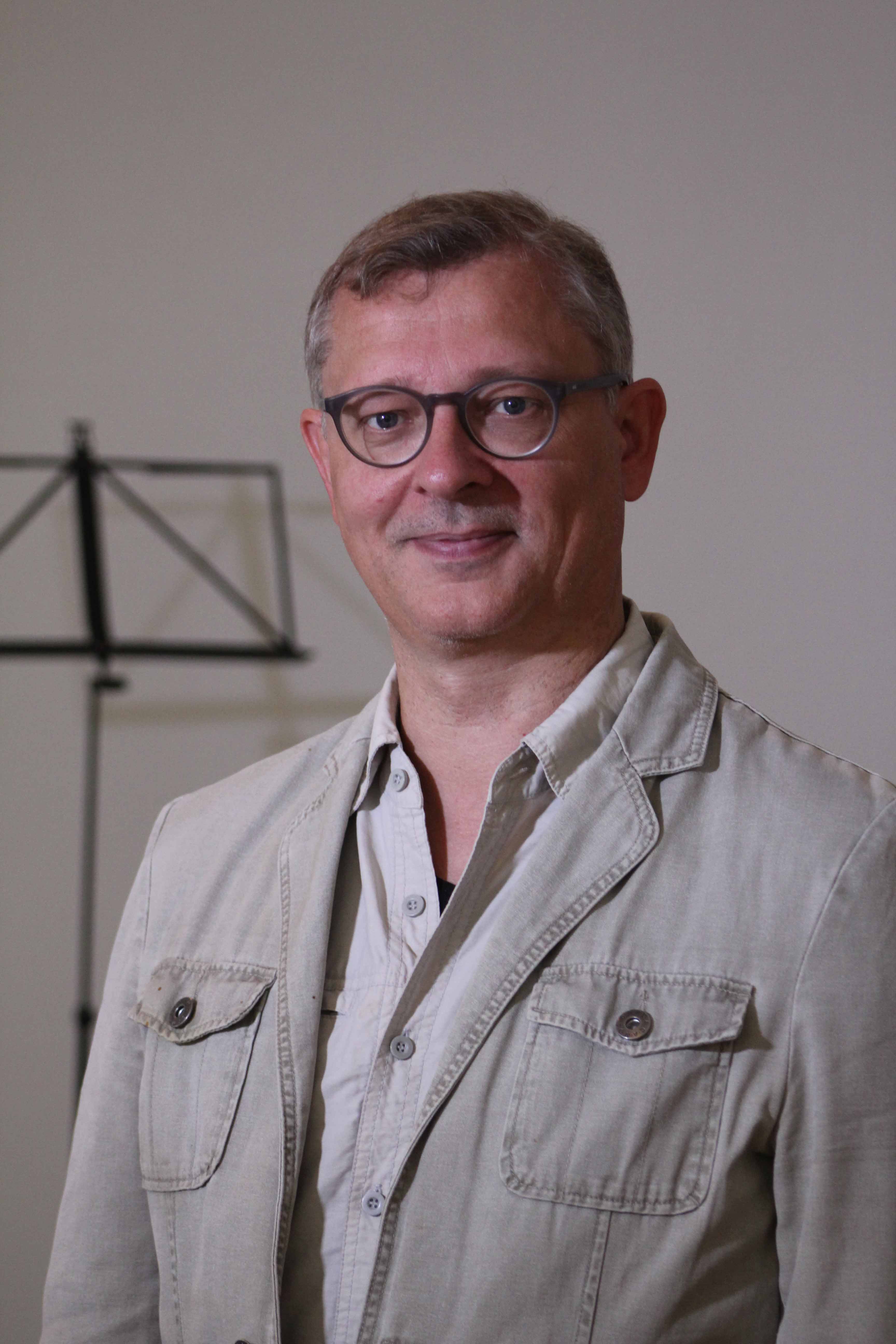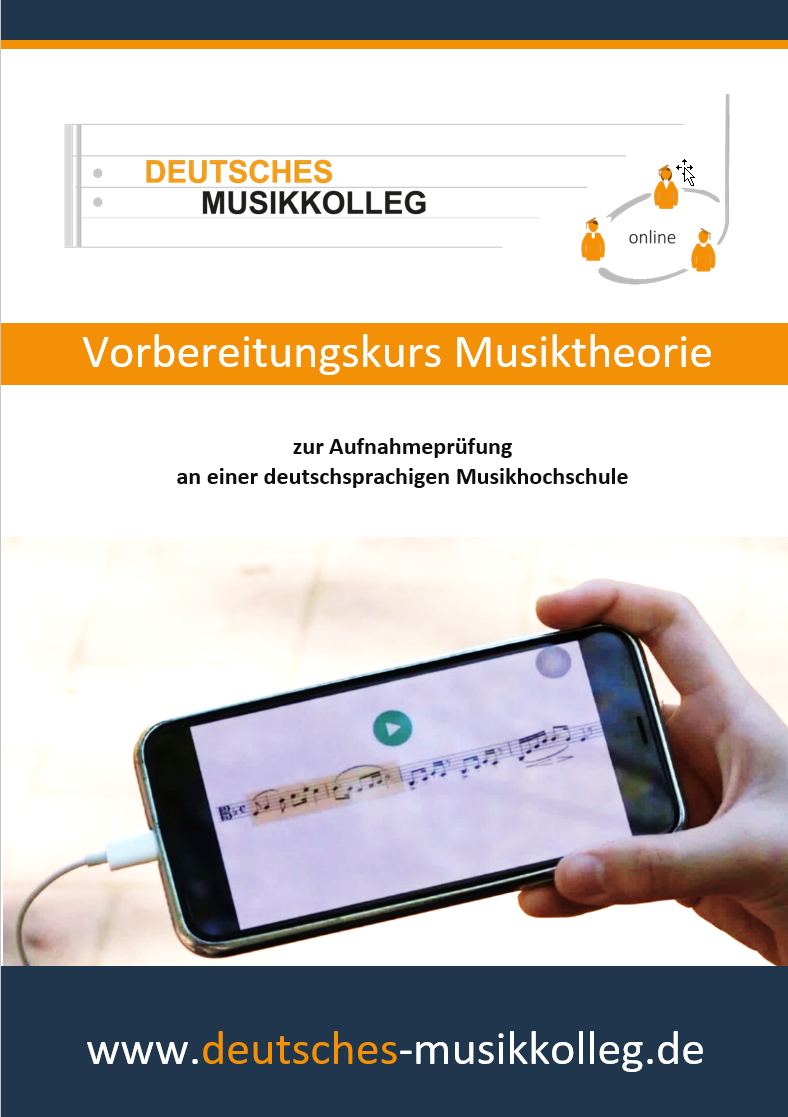Music Theory
Music theory preparation course
The preparatory course in music theory specifically prepares students for the requirements of the entrance examination to a German-speaking music conservatory.
It lasts 3 months, the lessons are held in German and consist of a mixture of individual and group lessons. For group lessons, a Chinese-speaking teaching assistant is provided as support.
Included in the course is a language training porgramm with interactive online training units for the most important musical terms in German.
The teaching method follows the approach of blended learning, according to this method is also taught at the KALAIDOS Musikhochschule.

Teacher
Ingo Laufs studied biology, music theory, composition and musicology at the conservatories of Hanover and Vienna. He is active as a composer and arranger, mainly in the symphonic field for renowned orchestras in Germany and abroad.
At the Hanover University of Music, Drama and Media, as well as at the KALAIDOS Academy of Music, he teaches the subjects of composition, analysis, theory of form, arrangement, composition. Further information is available on the website: ingo-laufs.de
Online-Lessons
The preparation course is designed online. There are now several years of experience with online teaching at the Swiss KALAIDOS Academy of Music, which show that the complex and multi-layered teaching content in the subject of music theory can be taught successfully online.
Technical Requirements
In terms of technical requirements for the course, the now common hardware equipment is sufficient:
· Computer with Internet (Latop, Tablet-PC, Smartphone)
· Printer
· Piano (ePiano, Keyboard)
· Scanner (or the photo function from the smartphone)
· eMail address
Procedure
The course is divided into twelve learning units. Each learning unit is designed to last two weeks. This includes a group webinar via ZOOM of 1 ½ hours for each participant one hour of individual instruction every 2 weeks.
The time required to complete each learning unit is approximately 4 ½ hours. This includes the webinar time of 1 ½ hours, working through the course materials (videos, scripts, exercises), learning together in the online learning group, one-on-one instruction, and your own consolidation exercises. All webinars are recorded and are available to the participants afterwards.
Videos and Scripts
For each course unit there is a script, video lectures and interactive learning materials. The scripts for each course unit can be printed out and bound into an accompanying booklet, for this purpose the pages are numbered consecutively.
Instructional Videos
The instructional videos convey content and are used to prepare for and follow up on group lessons.

Forming a Learning Group
The formation of a learning group by the participants is part of the course. The learning speed increases through mutual tasks. The common exchange releases from the isolation and motivates. And finally, a joint weekly meeting helps to deepen and practice the contents. After all, the content of the course must be deepened to such an extent that it can be applied directly in practice.
This is the only way to succeed in the entrance examination and thus to secure a place at university. Many tasks are therefore designed as group tasks.
Studienkolleg German with a Focus on Music
The language of instruction is German. This serves as preparation for the university classes, which are also held in German. For group lessons, a native Chinese speaker is provided to translate and provide assistance in understanding the lesson content.
In addition, there are interactive learning programs for learning the most important German technical terms in the field of music, the training program Musikalische Fachtermini. Text exercises help to deepen the written use of the German language at university level.
Through these exercises, a study course in German with a focus on music is integrated into the preparation program.
Exercises and Tasks
There are exercises and tasks for each learning unit. They are to be worked on by the individual or by the learning group. Solutions to the respective exercises are provided in the appendix, and there are also hints on how to design your own exercises to deepen the material.
Contents
Musicology
- Notation
- Clefs
- Scales
- Keys and Circle of Fifths
- Intervals, Triads, Seventh Chords
- Rhythm
Four-Part Harmony
- Cadences and Four-Part Harmony
- Song and Chorale Harmonization
- Cadence play
- Introduction to the Basso Continuo
Analysis
- Harmonic Snalysis
- Introduction to the Theory of Musical Forms
Ear training
- Intervals
- Triads, Seventh Chords
- Rhythm dictations
- Melodiediktate
- Singing at Sight
- Listening Analysis
